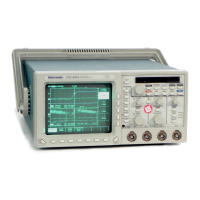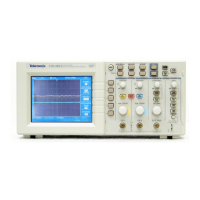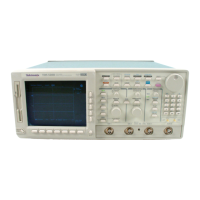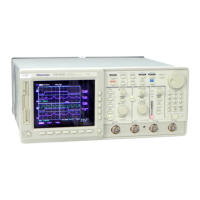TDS 420A, TDS 430A, TDS 460A & TDS 510A User Manual
3–5
Acquisition Modes
The acquisition system has several options for converting analog data into digital
form. The Acquisition menu lets you determine the acquisition mode, whether or
not to permit equivalent time sampling, and how to start and stop acquisitions.
Description of Modes
The digitizing oscilloscope supports five acquisition modes:
Sample
Peak Detect
Hi Res
Envelope
Average
The Sample, Peak Detect, and Hi Res modes operate in real-time on a single
trigger event, provided the digitizing oscilloscope can acquire enough samples
for each trigger event. Envelope and Average modes operate on multiple
acquisitions. The digitizing oscilloscope averages or envelopes several wave-
forms on a point-by-point basis.
In Sample mode, the oscilloscope creates a record point by saving the first
sample (of perhaps many) during each acquisition interval. (An acquisition
interval is the time covered by the waveform record divided by the record
length.) This is the default mode.
Peak Detect mode alternates between saving the highest sample in one acquisi-
tion interval and lowest sample in the next acquisition interval. This mode only
works with real-time, non-interpolated sampling.
If you set the time base so fast that it requires real-time interpolation or
equivalent-time sampling, the mode automatically changes from Peak Detect to
Sample, although the menu selection does not change.
In Hi Res mode, the digitizing oscilloscope averages all samples taken during an
acquisition interval to create a record point. That average results in a higher-reso-
lution, lower-bandwidth waveform.
Sample Mode
Peak Detect Mode
Hi Res Mode

